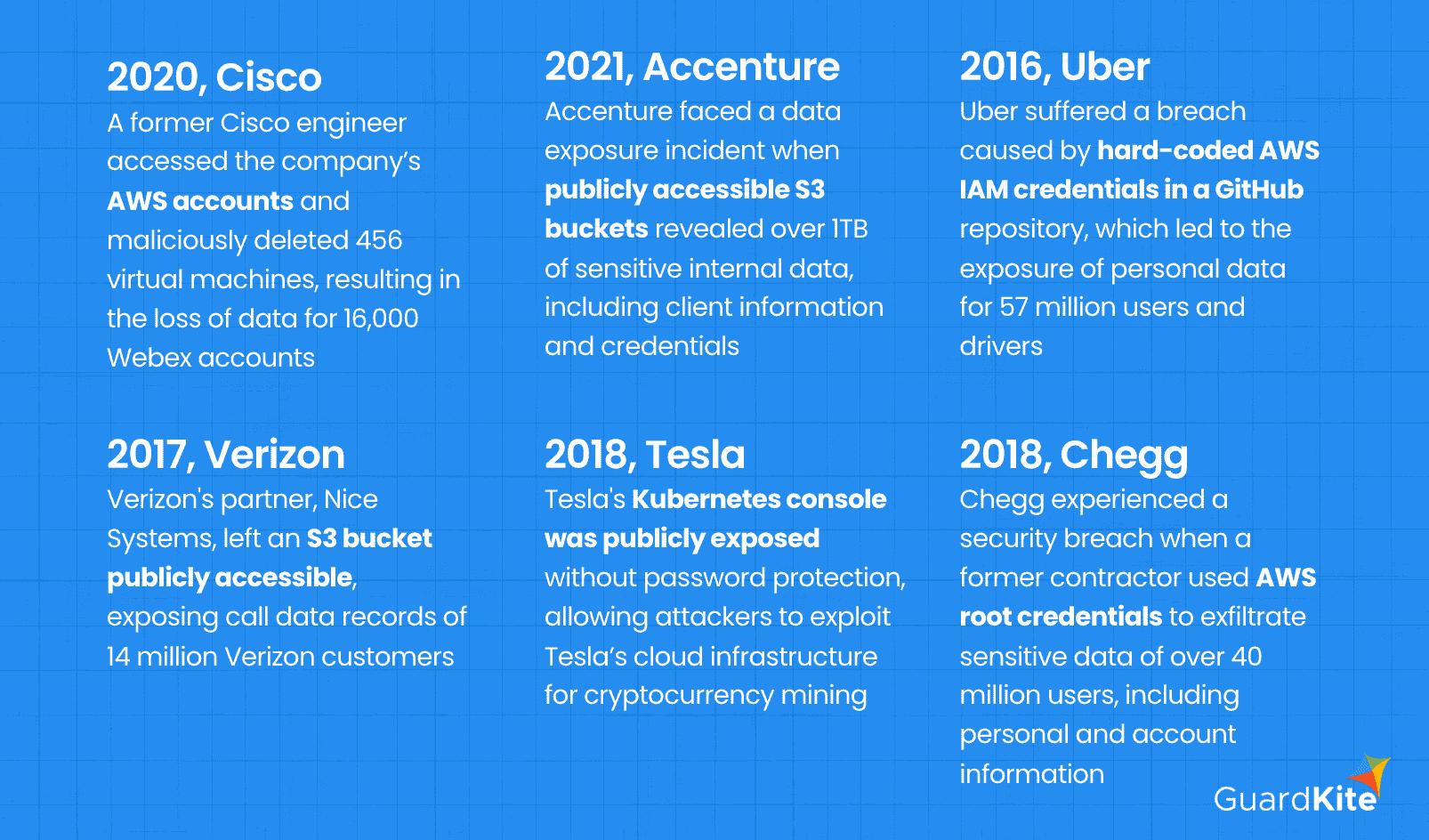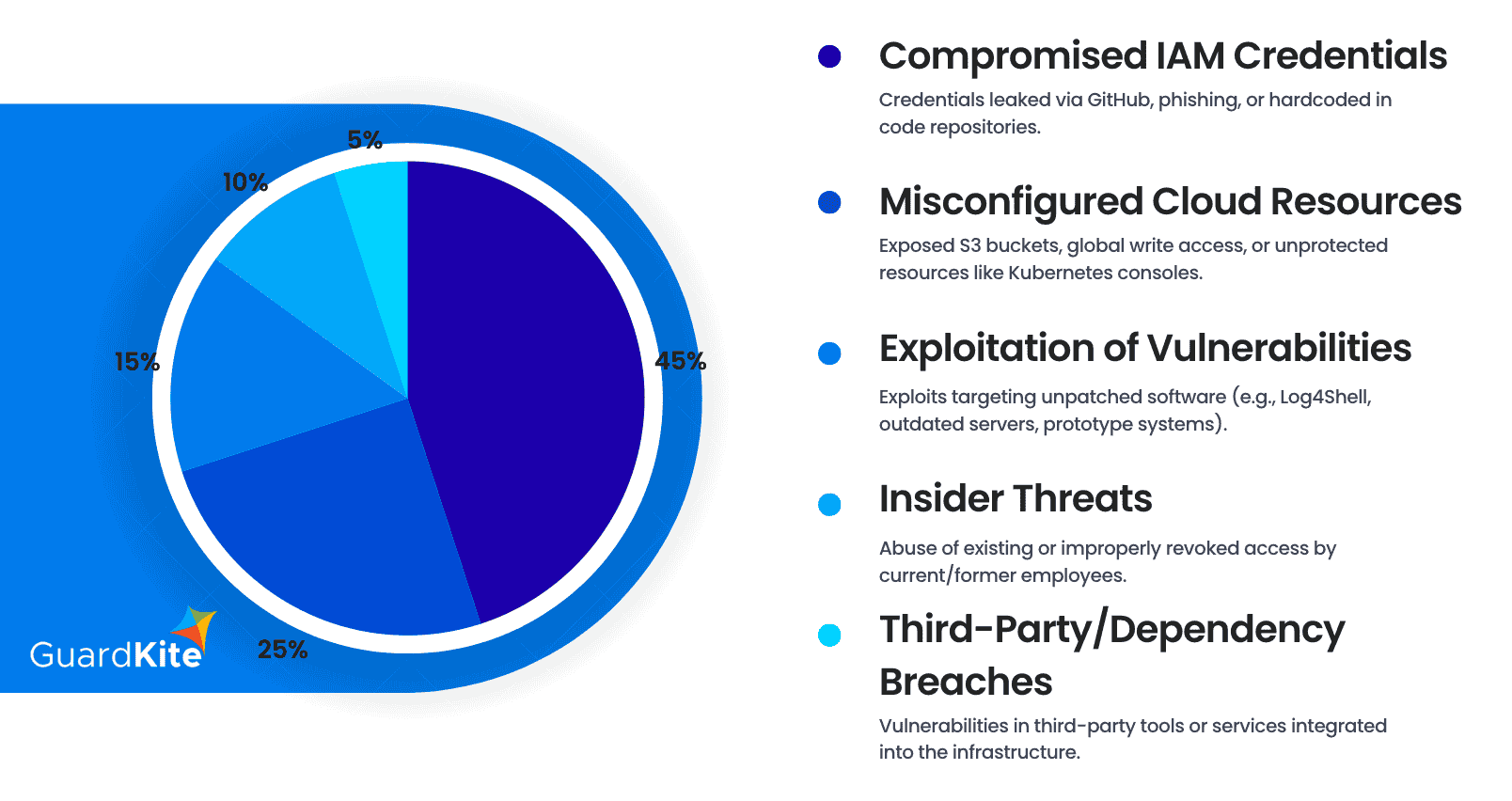Coming from a DevOps background, I've witnessed how security can sometimes take a backseat. Teams often prioritize delivering features and meeting deadlines, pushing security down the to-do list. However, security must be prioritized in the cloud, where everything is interconnected and constantly evolving. Neglecting it exposes organizations to significant risks.
Building a security-first culture isn’t just about adding firewalls or encrypting data; it’s about embedding security into your organization’s DNA. It’s about making every engineer, developer, and manager aware that security is not someone else’s job, it’s everyone’s responsibility. In this blog, I’ll share insights from my experience in DevOps on why a security-first culture is critical, how to build one, and how it can transform your cloud operations.
The Evolving Cloud Threat Landscape
Cloud infrastructure has revolutionized the way we build and deploy applications. But with its flexibility and great power comes great responsibility. Vulnerabilities such as misconfigurations of resources, weak password policies, and unpatched software can expose your cloud infrastructure to cyber threats.
Real-world incidents from prominent companies illustrate the consequences of neglecting basic security practices:

These incidents highlight how small missteps, such as exposed credentials or publicly accessible resources, can lead to massive data breaches, service disruptions, and reputational damage.
An analysis of cloud security incidents reveals that compromised credentials are the leading cause, accounting for 45% of breaches. This is followed by misconfigured cloud resources (25%), exploitation of vulnerabilities (15%), insider threats (10%), and third-party breaches (5%). A significant portion of these incidents stemmed from misconfiguration of resources and negligence of basic security best practices, emphasizing the importance of proactive security measures (source).
To better understand the root causes, here’s a breakdown of the major contributors to cloud security incidents:

Mistakes are inevitable when security is treated as a checklist item instead of an ongoing process. And in the cloud, even a small mistake can have huge consequences.
What Does a Security-First Culture Look Like?
A security-first culture means everyone in the organization whether they write code, manage infrastructure, or lead teams, thinks about security in everything they do. Here’s what it entails:
-
Proactive defense - Identify and address vulnerabilities proactively before attackers can exploit them.
-
Continuous Monitoring - Monitor your infrastructure continuously to ensure 24/7 protection.
-
Accountability - Encourage accountability by making every team member responsible for the security of their work.
-
Automation - Use automation tools to handle repetitive tasks efficiently and minimize human error.
In a security-first organization, security isn’t a roadblock, it’s a core enabler of innovation.
Steps to Build a Security-First Culture
So, how do you get there? It’s not about flipping a switch; it’s a journey. Here’s how you can start:
1. Train Your Team
Security awareness starts with education. Regular training sessions can help your team understand the latest threats, best practices, and tools. Make security training a part of your onboarding process and revisit it regularly.
2. Automate Security Checks
Manual processes are error-prone and time-consuming. Automate as much as possible, whether it’s scanning for misconfigurations, enforcing compliance, or monitoring access logs. Automation reduces human error, ensures consistency, and helps you avoid potential vulnerabilities.
3. Shift Security Left
Adopt a shift-left approach by embedding security earlier in the software development lifecycle. Integrate security checks into CI/CD pipelines to catch vulnerabilities in code before it’s deployed. Automated code scanning tools and pre-deployment checks help identify issues at the source, reducing risks and remediation costs.
4. Create Clear Policies
Your team can’t follow rules they don’t know exist. Define policies for things like IAM permissions, resource provisioning, and data encryption. Document these policies and make them easily accessible.
5. Foster Collaboration
Security isn’t just the responsibility of a single team. DevSecOps is all about integrating security into every step of your DevOps pipeline. Encourage developers, DevOps engineers, and security teams to work together from day one. Regular communication and collaboration foster a shared responsibility for security.
6. Start Small, Scale Gradually
You don’t have to overhaul everything at once. Start with a single project or team, implement security-first principles, and iterate based on what you learn. Small, incremental improvements build momentum and help align the team with security goals.
The Role of Technology in Enabling Security
Technology plays a crucial role in building a security-first culture. Here are some effective ways to leverage it:
-
Use automated code scanning tools to identify vulnerabilities and security flaws in your application code before deployment.
-
Regularly scan your infrastructure for vulnerabilities using continuous scanning tools.
-
Set up alerts to detect and notify your team of suspicious activities, such as unauthorized access attempts.
-
Automate compliance checks to meet standards like ISO 27001, SOC 2, or GDPR.
-
Enable logging to maintain comprehensive audit trails for all critical actions in your cloud environment.
One effective way to implement these technologies is by adopting a shift-left approach, which embeds security early in the development lifecycle. This strategy ensures that security checks are performed at every stage, from writing code to infrastructure provisioning and continuous cloud monitoring.
The following flow illustrates how the shift-left approach integrates security throughout the process.

By leveraging the right tools and strategies like shift-left, you can streamline security processes while improving your overall security posture.
Measuring the Success of a Security-First Culture
How do you know if your efforts are paying off? Here are some indicators:
-
Experience fewer security breaches or misconfigurations over time as incidents are reduced.
-
Achieve smoother audits with fewer issues, demonstrating improved compliance.
-
Address vulnerabilities quickly to ensure faster resolution times.
-
Receive positive feedback from your team as security becomes an integrated, seamless part of the process rather than a bottleneck.
Regularly review your progress and adjust your approach based on what works and what doesn’t.
Conclusion
Building a security-first culture isn’t easy, but it’s a journey worth undertaking. By embedding security into your cloud operations, you can reduce risks, enhance resilience, and build trust with stakeholders.
While achieving a security-first culture may feel overwhelming, starting small can make a big difference. Focus on incremental improvements like training your team, automating security checks, and adopting a shift-left approach.
If you’re looking for a tool to simplify this process, consider GuardKite. Designed for cloud security posture management, it provides automated scans, actionable recommendations, and compliance guidance, helping your team scale your business while staying secure.
Start small, stay consistent, and watch your security-first culture take root and flourish—with a little help from the right tools.


